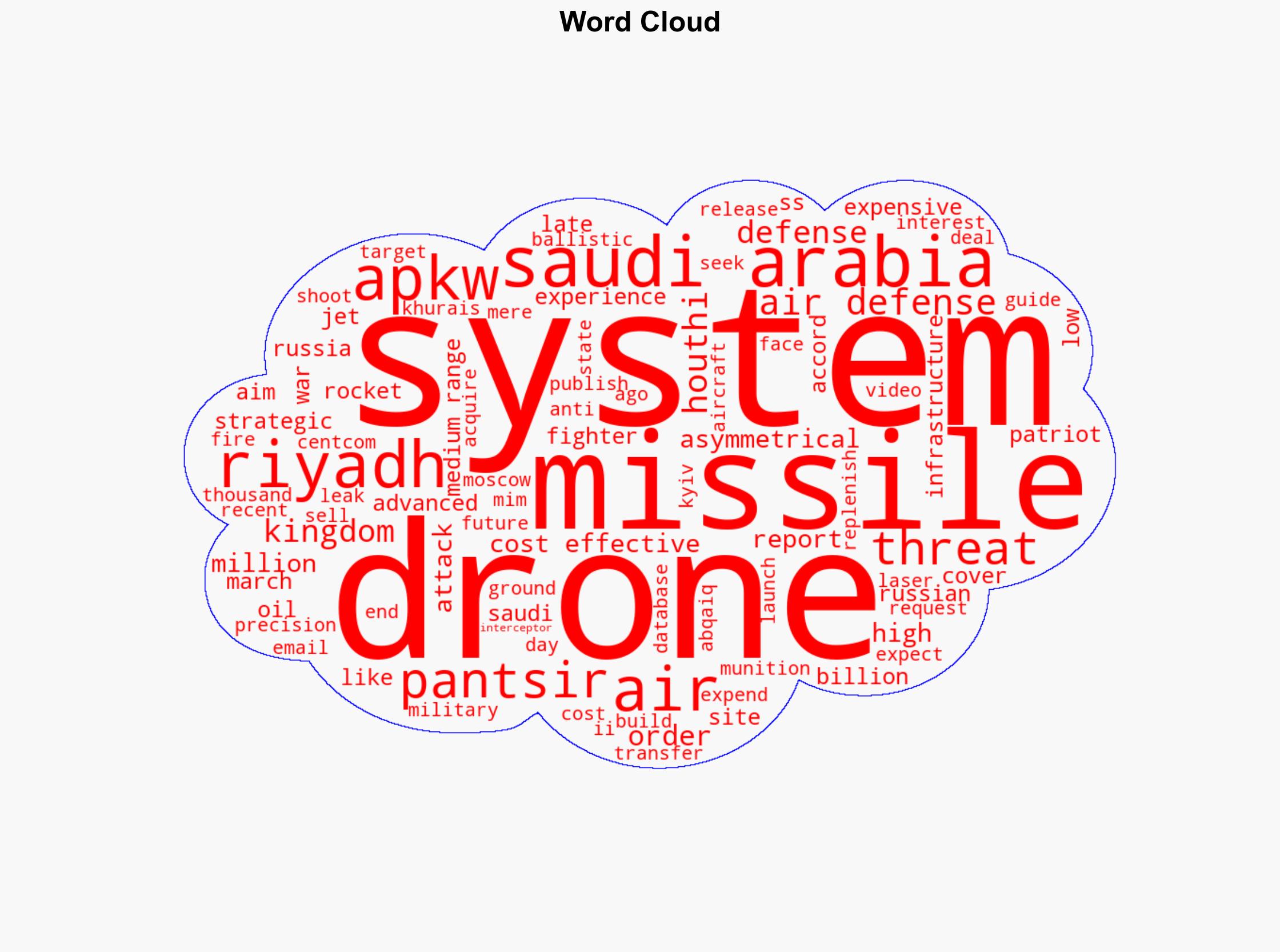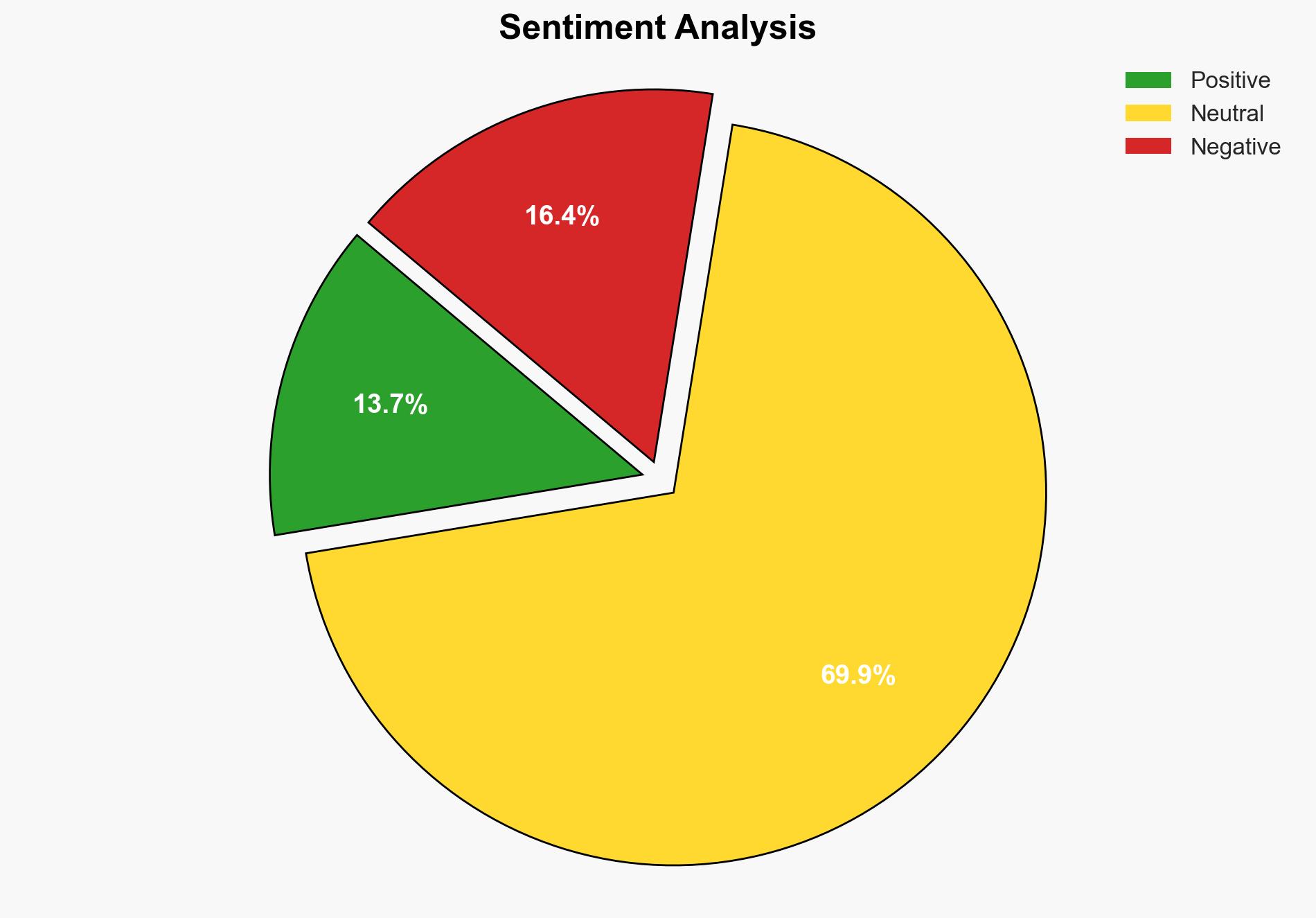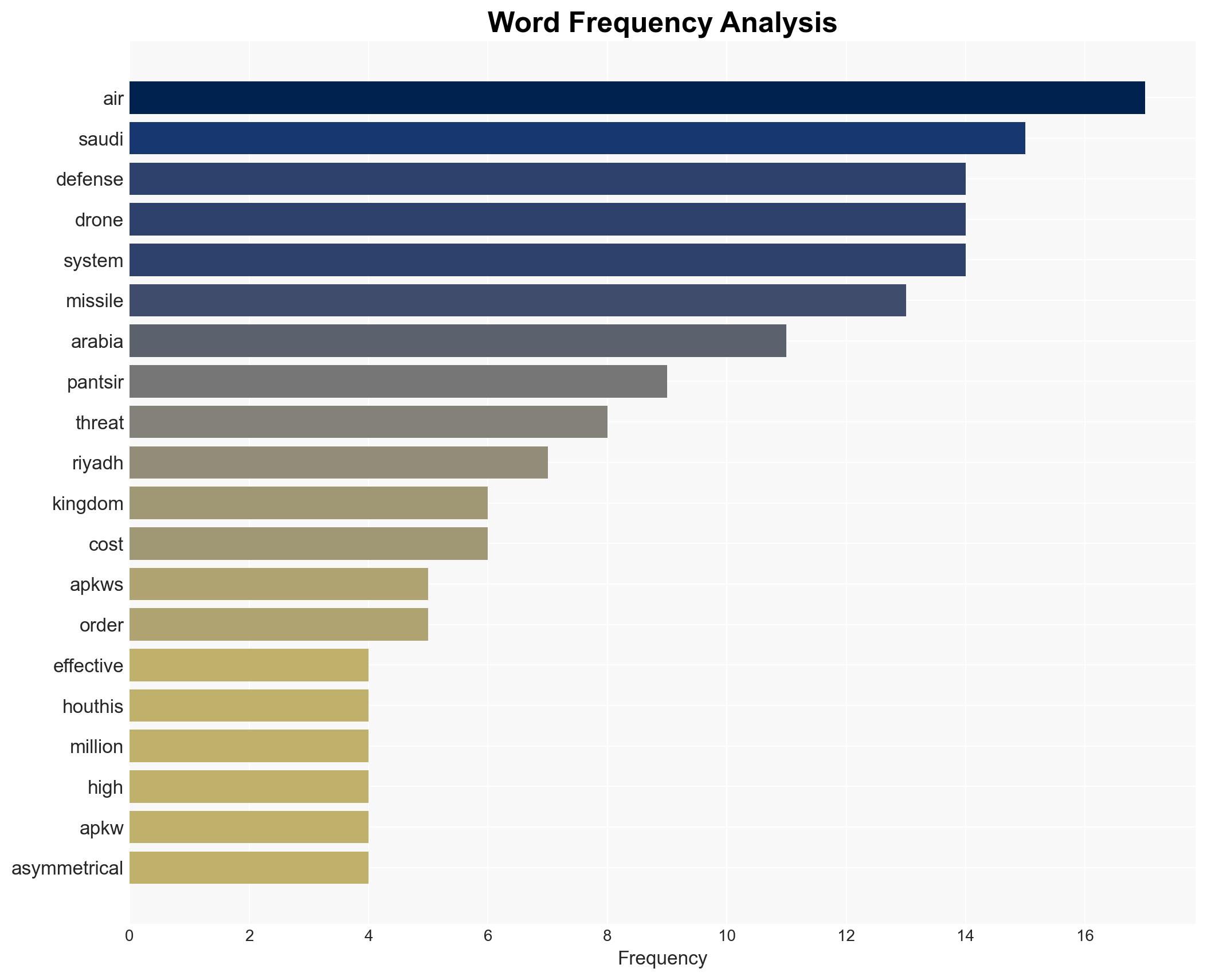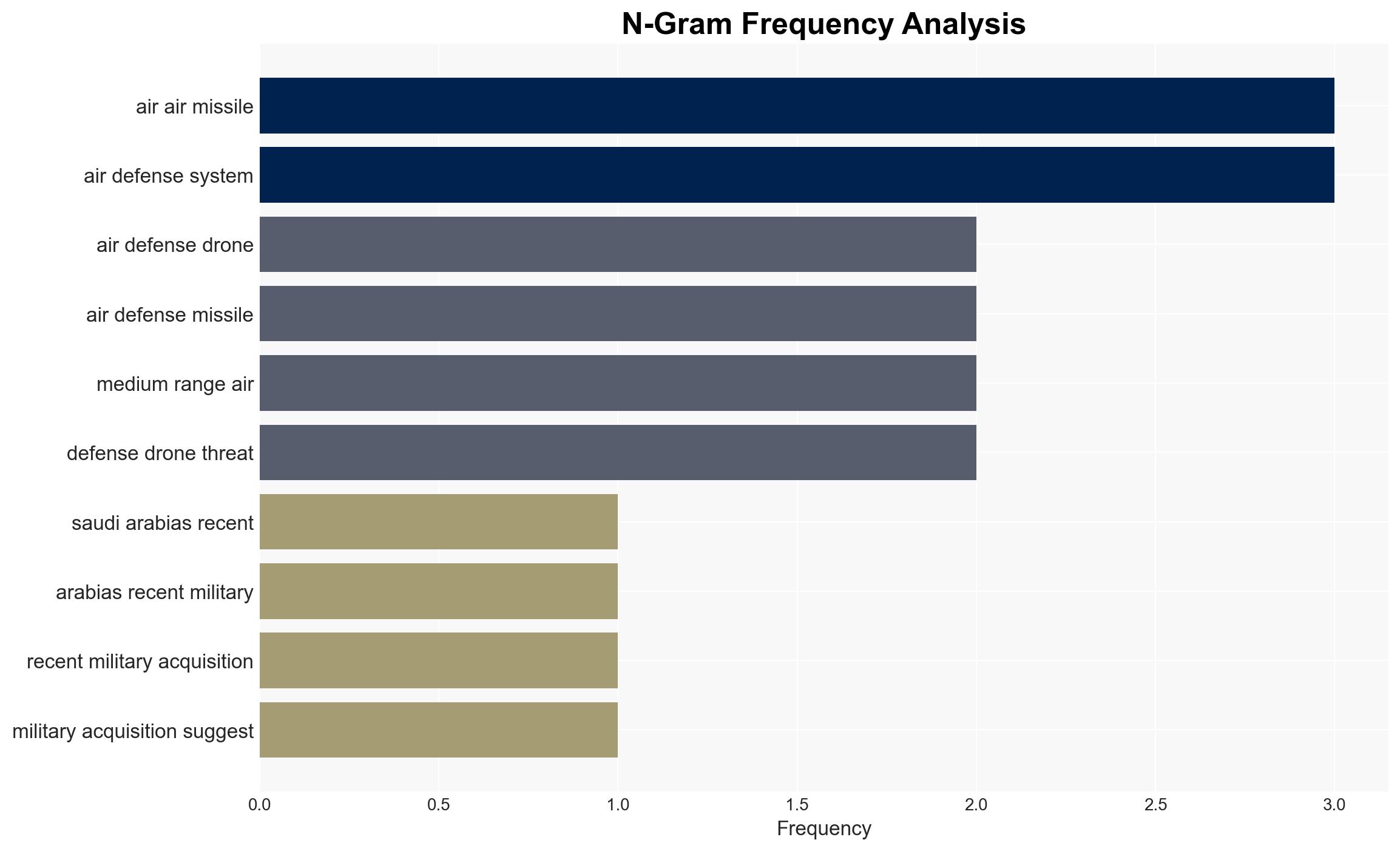APKWS And Pantsir-S1s Saudi Arabia Acquiring More Cost-Effective Defenses Against Drones – Forbes
Published on: 2025-04-01
Intelligence Report: APKWS And Pantsir-S1s Saudi Arabia Acquiring More Cost-Effective Defenses Against Drones – Forbes
1. BLUF (Bottom Line Up Front)
Saudi Arabia is enhancing its air defense capabilities by acquiring cost-effective systems to counter drone threats, notably from the Houthis. The acquisition includes Advanced Precision Kill Weapon Systems (APKWS) and Pantsir-S1 systems. These measures aim to address the economic and strategic challenges posed by asymmetric warfare tactics, such as drone and missile attacks.
2. Detailed Analysis
The following structured analytic techniques have been applied for this analysis:
General Analysis
Saudi Arabia’s military strategy is shifting towards more economical solutions for air defense. The APKWS provides a cost-effective method for intercepting drones, converting low-tech rockets into precision-guided munitions. This shift is driven by the high cost of using advanced missiles against relatively inexpensive drone threats. Additionally, the acquisition of Pantsir-S1 systems from Russia indicates a diversification of defense sources, potentially increasing Saudi Arabia’s strategic autonomy.
3. Implications and Strategic Risks
The acquisition of these systems could alter the balance of power in the region, impacting national security and regional stability. The reliance on cost-effective defenses may reduce financial strain but could also lead to increased tensions with neighboring countries and adversaries. The integration of Russian defense technology poses potential risks related to interoperability with existing systems and geopolitical alignments.
4. Recommendations and Outlook
Recommendations:
- Enhance interoperability between new and existing defense systems to ensure seamless integration and operational efficiency.
- Conduct regular assessments of defense strategies to adapt to evolving threats and technological advancements.
- Engage in diplomatic efforts to mitigate regional tensions and foster cooperation in countering asymmetric threats.
Outlook:
In the best-case scenario, Saudi Arabia successfully integrates these systems, enhancing its defense capabilities while maintaining regional stability. In the worst-case scenario, increased military capabilities could escalate regional tensions, leading to potential conflicts. The most likely outcome involves a gradual improvement in defense efficiency, with ongoing challenges in balancing economic and strategic interests.
5. Key Individuals and Entities
The report mentions significant individuals and organizations involved in the acquisition and strategic planning of Saudi Arabia’s defense systems. Notable entities include the Defense Security Cooperation Agency and the Stockholm International Peace Research Institute. Additionally, the report references investigative journalism efforts that uncovered details of the acquisition.





